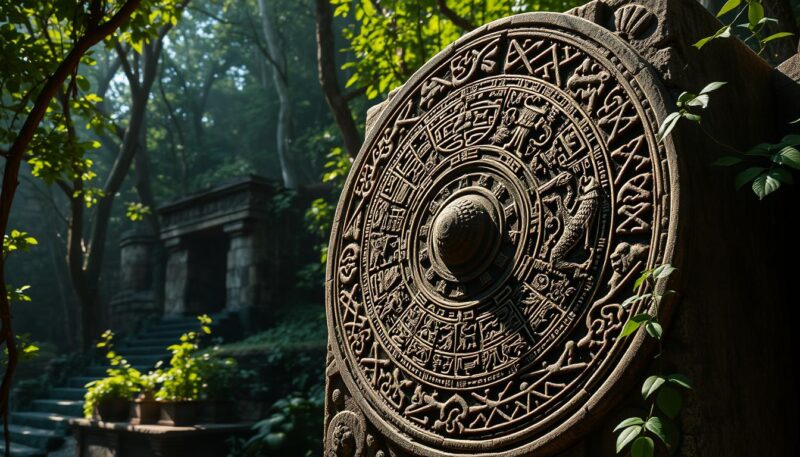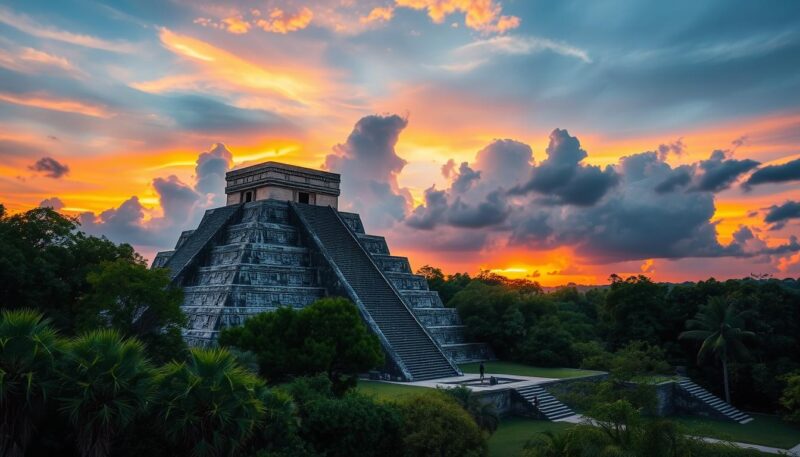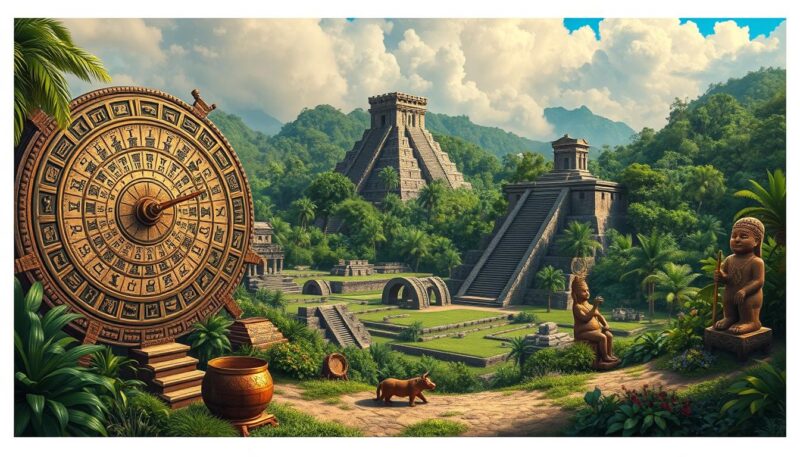The Mayan civilization, a beacon of ancient brilliance, flourished for over 2,000 years, primarily during the Classic Period, from 300 A.D. to 900 A.D. This era saw significant progress in various fields, leading to remarkable Mayan inventions that continue to influence our lives today. From their intricate mathematical systems to their accurate calendars and innovative architecture, the genius of the Maya laid the groundwork for many of the advancements we often take for granted.
One of the most noteworthy aspects of ancient Mayan science is their independent development of the concept of zero around 350 A.D., predating its formal adoption in other cultures. Their sophisticated understanding of mathematics enabled them to count into the millions, allowing for enhanced calculations in both civic planning and astronomy. This mathematical prowess was not only essential for their architectural endeavors but also played a crucial role in their agricultural practices, directly impacting their daily lives.
Among the legacies left by the Maya is their unique calendar system, which combined complex astronomical observations with practical agricultural needs. The ability to accurately predict seasonal changes was vital for a civilization deeply intertwined with the rhythms of the earth. Moreover, the Mayan writing system, comprising approximately 700 glyphs, provided a means of documentation and communication that has withstood the tests of time, with about 80% still understood by their descendants today.
Additionally, the development of elastic rubber as far back as 1600 B.C. showcased their ingenuity in materials science, long before the vulcanization process was introduced in the 19th century. This innovation enabled the creation of the popular game ‘Pok-A-Tok,’ which not only served recreational purposes but also played a role in settling disputes, highlighting its importance within Mayan culture.
Furthermore, the use of cocoa beans as currency during the peak of their civilization exemplifies the economic and cultural impact that chocolate held in their society. Referred to as the “food of the Gods,” chocolate was a vital part of religious ceremonies, strengthening the connection between their daily practices and divine beliefs.
As current descendants of the ancient Maya continue to inhabit various regions of Mexico and Central America, including Yucatán, Quintana Roo, and Chiapas, they preserve many aspects of their rich heritage. This ongoing preservation signifies not only the resilience of the Maya but also their profound influence on contemporary society. The scientific advancements, cultural practices, and architectural marvels of the Mayan civilization continue to inspire and shape our understanding of history.
Join us as we delve deeper into the specific inventions and scientific achievements that illustrate the lasting influence of the Mayan civilization, exploring how their innovations continue to resonate in today’s world.
The Marvels of Mayan Mathematics and the Concept of Zero
Mayan mathematics stands out as a remarkable achievement of ancient Mayan science, reflecting the ingenuity of a civilization that thrived in Mesoamerica. The Mayans developed a unique numerical system that incorporated the concept of zero, revolutionizing mathematical approaches and calculations that continue to influence modern practices.
Understanding Mayan Numerals and their Place Value System
The Mayan numerals utilized a base-20 system, which included distinct symbols for zero, units, and groups of five. This sophisticated structure permitted the Mayans to represent large numbers and perform complex arithmetic. Their ability to record vast numbers was not only essential for trade and agriculture but also for astronomical calculations and calendar systems.
The Significance of Zero in Mayan Culture
Zero in Mayan culture emerged as a crucial concept in approximately the 4th century AD, marking the Mayans as one of the earliest civilizations to recognize its importance. The shell symbol representing zero facilitated advanced calculations, empowering the Mayans to chart celestial events and create their sophisticated calendar. This understanding allowed them to predict eclipses, track planetary movements, and establish the cycles of agriculture with remarkable accuracy.
Influence of Mayan Mathematics on Modern Practices
The influence of Mayan mathematics and their innovative use of zero extends into contemporary fields. Today, zero is a foundational element in the Hindu-Arabic numeral system, essential for calculations in science, engineering, and even computing. The legacy of Mayan mathematics resonates in modern practices, manifesting in techniques such as coding, algorithm development, and statistical analysis. This ancient understanding continues to bridge the past with the present, underscoring the Mayan civilization’s lasting impact on mathematical thought.
Mayan Calendar System: An Astronomical Achievement
The Mayan calendar system represents one of the most sophisticated timekeeping methods in the ancient world. It incorporated two main components: the Calendar Round and the Long Count Calendar. These intricate systems reflect the deep understanding of Mayan astronomy and their need to align agricultural practices with celestial cycles. Through this calendar system, the Maya managed to track significant periods and predict important seasonal events.
Structure and Function of the Calendar Round
The Calendar Round is a combination of two overlapping cycles: the 260-day Tzolk’in and the 365-day Haab. Each Calendar Round lasts for 52 years, comprising a total of 18,980 days without repetition. This unique blend allowed the Maya to effectively organize their rituals, agricultural festivals, and everyday life. The Tzolk’in corresponds closely with lunar cycles, while the Haab approximates the solar year.
| Cycle Name | Length | Structure |
|---|---|---|
| Tzolk’in | 260 days | 20 day glyphs x 13 numbers |
| Haab | 365 days | 19 months (18 months of 20 days + 1 month of 5 days) |
| Calendar Round | 52 years | Combination of Tzolk’in and Haab |
The Long Count Calendar: A Revolutionary Timekeeping Method
The Long Count Calendar emerged for tracking longer periods, beginning from a base date of August 11 or August 13, 3114 B.C. This method grouped days into cycles, enabling the Maya to document historical events and ritual dates over millennia. The structure of the Long Count consists of multiple cycles, including baktun, k’atun, tun, uinal, and kin, allowing precise calculations of time that could extend up to 5,139 solar years.
Astronomy and Agriculture: How Calendars Influenced Daily Life
The interconnection between Mayan astronomy and agriculture is critical. The calendars played a vital role in determining seasonal changes, which guided the timing of planting and harvesting crops like maize, beans, and squash. Celestial events such as equinoxes and solstices influenced agricultural practices and religious ceremonies. By utilizing their advanced calendars, the Maya could synchronize their activities with the natural world, showcasing their mastery of the Mayan calendar system and its significance for their civilization.

Mayan Inventions: Innovations in Architecture and Engineering
The Mayan civilization displayed remarkable ingenuity in the realms of architecture and engineering, evident in their iconic structures and advanced technologies. Central to their achievements are the pyramids of Chichén Itzá, which not only served religious purposes but also reflected profound astronomical knowledge. Beyond their impressive structures, the hydraulic engineering implemented by the Mayans allowed them to manage water resources effectively, demonstrating their adaptability to a diverse environment. Their agriculture techniques further exemplified sustainability and resourcefulness, ensuring their civilization flourished for generations.
Iconic Structures: The Pyramids of Chichén Itzá
The pyramids of Chichén Itzá stand as a testament to Mayan architecture. These structures were meticulously designed, displaying a deep understanding of astronomy, as their alignment corresponds with solar events. Visitors today marvel at El Castillo, which features 91 steps on each side, creating a total of 365 for the number of days in a year. This blending of engineering and celestial knowledge marks it as one of the most significant examples of Mayan ingenuity.
Hydraulic Engineering: The Maya’s Advanced Water Management Techniques
Hydraulic engineering among the Mayans included the creation of an intricate system of reservoirs and canals. This engineering feat facilitated efficient water conservation and distribution, crucial for sustaining their agricultural practices. Innovative structures, such as aqueducts, allowed the Mayans to transport water over long distances, significantly enhancing their agricultural productivity. Through such methods, hydraulic engineering Mayans transformed their landscape, ensuring food security and supporting densely populated urban centers.
Environmental Adaptation in Mayan Agriculture
Mayan agriculture techniques showcased a sophisticated understanding of environmental factors. Terracing and crop rotation allowed them to maximize output in varying terrains. The integration of natural elements into their agricultural processes emphasized sustainable practices that preserved soil health. The Mayans cultivated a variety of crops, reflecting their adaptability to changing environmental conditions. Their approach to farming not only sustained their population but laid the groundwork for future agricultural practices.

| Innovation Area | Description | Impact on Society |
|---|---|---|
| Mayan Architecture | Construction of pyramids like Chichén Itzá, aligned with celestial bodies | Served as ceremonial centers and reflected astronomical acumen |
| Hydraulic Engineering | Development of reservoirs and aqueducts for water management | Enhanced agricultural productivity and supported large populations |
| Agricultural Techniques | Use of terracing, crop rotation, and integration with natural elements | Ensured sustainability and food security for the Maya civilization |
Conclusion
The ancient Mayan civilization, flourishing from 2600 BC until the 16th century, made extraordinary contributions that resonate through centuries into contemporary society. From their intricate understanding of mathematics and the groundbreaking concept of zero to their awe-inspiring advancements in astronomy and architecture, the impact of Mayan inventions is significant. These innovations not only highlighted the sophistication of ancient Mayan science but also laid foundational principles that continue to inform modern practices.
Mayan calendars, meticulously calculated to include a solar year of 365.2420 days, demonstrate an impressive precision that rivals even today’s Gregorian calendar. Additionally, their architectural feats, such as the remarkable pyramids at Chichén Itzá, showcase their ability to harmonize with nature, an ethos that mirrors current environmental initiatives. The influence of Mayans today is evident in various fields, ranging from agricultural sustainability to scientific exploration, emphasizing a deep-rooted legacy that persists in our day-to-day lives.
As we delve into the genius of the Maya, we reveal a civilization that was not only advanced in its time but also foundational in shaping countless aspects of modern life. The legacy of their inventions and scientific endeavors continues to inspire, as the echoes of their ingenuity become apparent in our efforts to understand the world around us. The lasting influence of Mayan culture serves as a reminder of our shared history and the timeless relevance of ancient wisdom.

